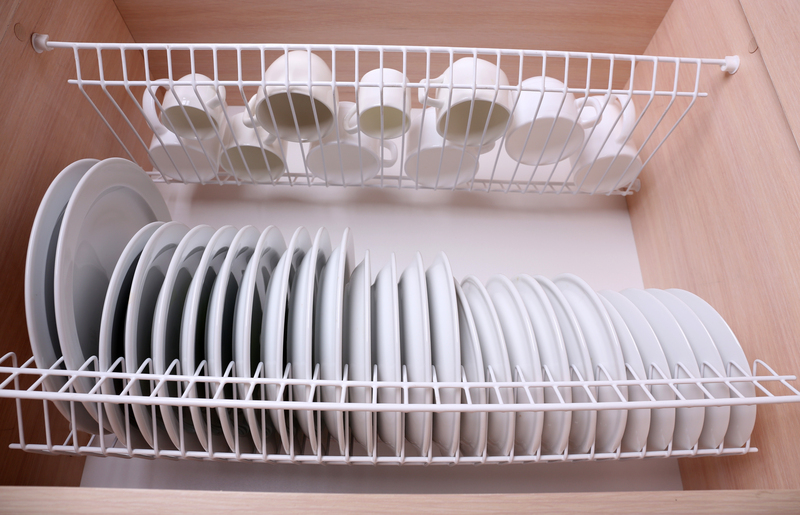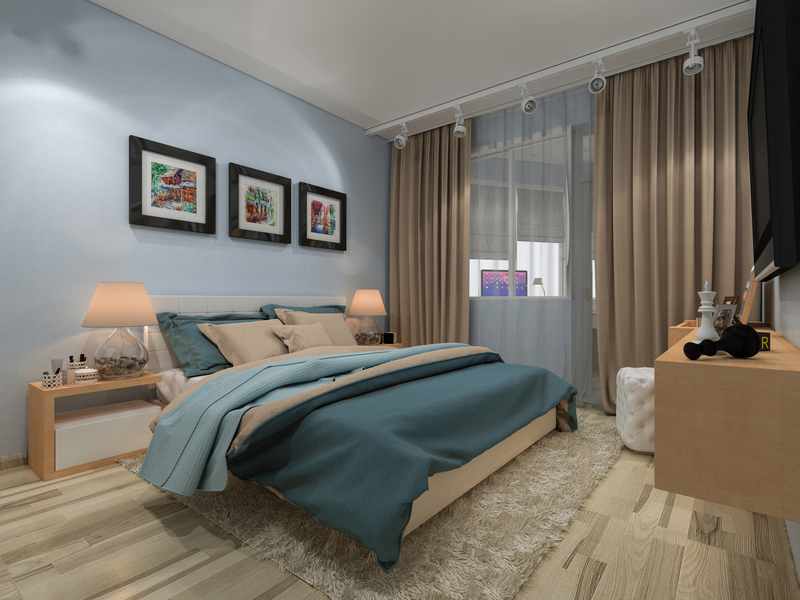Transforming air: A fresh approach to healthier interiors
Posted on 16/06/2025
Transforming Air: A Fresh Approach to Healthier Interiors
In today's fast-paced urban environments, people spend nearly 90% of their time indoors. Yet, many overlook the critical role of indoor air quality in health and wellbeing. The concept of transforming air introduces a holistic, innovative approach to achieving healthier interiors--where every breath invigorates instead of endangers. This comprehensive guide explores cutting-edge strategies, technologies, and practical tips for cleaner, fresher, and health-boosting living spaces.
Understanding the Importance of Healthy Indoor Air
Indoor air quality (IAQ) dramatically influences respiratory health, cognitive function, sleep quality, and even mood. According to the World Health Organization, poor IAQ is linked to a rise in allergies, asthma, and chronic illnesses. In the wake of global health concerns and heightened awareness, the demand for healthier interiors by transforming indoor air has never been greater.
What Affects Indoor Air Quality?
- Ventilation: Limited airflow traps pollutants indoors.
- Chemical Emissions: Off-gassing from paints, furniture, and cleaning products.
- Particulate Matter: Dust, pet dander, pollen, and smoke.
- Biological Contaminants: Mold, bacteria, and viruses.
- Outdoor Pollutants: Traffic or industrial pollution seeping indoors.

Modern Approaches to Transforming Indoor Air
The journey towards healthier indoor air requires a multi-faceted strategy. By combining technology, design, and habit changes, it's possible to significantly improve the atmosphere in homes, offices, and public spaces.
1. Smart Air Purification Technologies
Advanced air purifiers now go beyond dust removal. They use HEPA, carbon, and UV filters to trap allergens, neutralize odors, and destroy pathogens.
- HEPA Filters: Capture up to 99.97% of airborne particles, including pollen, bacteria, and dust mites.
- Activated Carbon: Absorbs VOCs (volatile organic compounds) and unpleasant smells.
- UV-C Technology: Destroys bacteria, viruses, and mold spores at the DNA level.
Transforming air in your interiors becomes seamless with smart purifiers that automatically monitor and adjust purification based on real-time air quality, ensuring continuous freshness.
2. Enhancing Ventilation Systems
Increasing airflow is crucial for healthy indoor air. Modern solutions include:
- Energy Recovery Ventilators (ERVs): Exchange indoor and outdoor air, balancing temperature and humidity.
- Mechanical Ventilation: Consistent, controlled airflow, especially in airtight new buildings.
- Natural Ventilation: Strategic window placement and open-plan layouts maximize natural breezes.
Incorporating advanced ventilation solutions is key for transforming air indoors and reducing buildup of toxins and humidity.
3. Eco-Friendly Building Materials and Furnishings
The materials you choose for walls, floors, and furniture play a major role in air purity. Opt for:
- Low-VOC paints and finishes
- Solid wood furniture or certified non-toxic composites
- Natural fiber rugs and carpets
- Formalhyde-free cabinetry and flooring
These choices minimize chemical off-gassing, promoting cleaner, fresher interiors naturally.
Biophilic Design: Nature as a Filter
Introducing living plants isn't just aesthetic--it's a proven method for enhancing indoor air quality. Common houseplants like peace lilies, spider plants, and snake plants actively absorb toxins and release oxygen. Combining multiple varieties increases the transformative power of indoor greenery.
- Peace Lily: Filters benzene, formaldehyde, and trichloroethylene
- Snake Plant: Converts CO2 to oxygen even at night
- Aloe Vera: Purifies benzene and formaldehyde
Biophilic design--interior design inspired by nature--not only cleans air but also reduces stress and boosts creativity, making it a holistic approach to transforming air in living spaces.
4. The Magic of Humidity Management
Optimal humidity (between 35-50%) is critical for healthy interiors. Too little leads to dry skin and respiratory issues, while excess fosters mold and dust mites.
- Dehumidifiers: Useful in damp climates or during rainy seasons.
- Humidifiers: Add moisture in dry, heated environments.
- Hygrometers: Digital tools to monitor indoor humidity levels easily.
Managing humidity prevents airborne contaminants from thriving, contributing to truly fresh and healthier interiors.
Daily Habits to Support Healthier Indoor Air
Transforming air quality isn't just about technology and products, but also mindful daily practices:
- Open windows daily when weather allows to flush out indoor pollutants.
- Avoid smoking indoors--one of the most toxic indoor air pollutants.
- Regularly clean air vents, filters, and extractor fans in kitchens and bathrooms.
- Use natural cleaning products free from synthetic fragrances and harsh chemicals.
- Reduce clutter to minimize dust accumulation and create a more breathable space.
Incorporating these habits daily amplifies the gains from modern approaches for a sustained transformation of indoor air.
Integrating Smart Home Solutions
The rise of smart home technology brings new opportunities to monitor and control air quality effortlessly. Devices and apps now let homeowners:
- Receive real-time air quality alerts and recommendations
- Schedule air purifiers and HVAC systems for maximum efficiency
- Track pollutants and allergens by room, time of day, and season
- Integrate environment controls with voice assistants or smartphones
This data-driven, connected approach means transforming indoor air is now easier, smarter, and more customizable than ever.
Design Tips for Air-Optimized Interiors
Interior design can support healthy air transformation. Consider these expert tips:
- Maximize natural light: Sunlight naturally kills some germs and boosts mood.
- Space furniture thoughtfully: Avoid blocking air vents and windows.
- Choose washable fabrics: Curtains and cushions should be easy to clean.
- Zone high-pollution activities: Keep kitchens and utility rooms well-ventilated and separate.
These design tactics not only enhance aesthetic appeal but also actively promote healthier and fresher interiors.
Emerging Trends in Indoor Air Transformation
The future of healthier interiors will see new innovations, including:
- Photocatalytic coatings on walls that neutralize VOCs and kill germs using light.
- Nanotechnology filters capable of trapping the finest nanoparticles and pathogens.
- Modular green walls that combine living plants with smart irrigation and filtration.
- Wearable air quality sensors for real-time personal exposure feedback.
These emerging methods will continue to raise standards in the quest for truly transformative, cleaner indoor air.
Why Transforming Indoor Air Should Be a Priority
Many people invest in nutrition, exercise, and healthcare but overlook that air quality inside the home, office, or school is a foundational element of health. Focusing on transforming indoor air delivers benefits including:
- Fewer allergies and respiratory issues
- Improved sleep quality and recovery
- Enhanced mental clarity and work productivity
- Better mood and reduced stress
- Long-term disease prevention
Most importantly, healthier interiors foster joy, comfort, and vitality for all who live and work within them.

Take Action: Your Step-by-Step Plan for Transforming Air Indoors
- Assess your air: Use an indoor air quality monitor or rely on trusted online data for your locality.
- Ventilate: Open windows, add exhaust fans, or consider mechanical ventilation.
- Purge pollutants: Switch to natural cleaners, replace chemical-heavy furnishings, and store paints/chemicals outside living areas.
- Invest in air purification: Choose the right-size purifier for each space, focusing on HEPA and carbon filters.
- Embrace biophilic design: Add easy-care, toxin-filtering plants in rooms you use most.
- Control humidity: Monitor and adjust with humidifiers/dehumidifiers as needed.
- Adopt healthy habits: Clean regularly, avoid indoor smoking, and manage clutter.
- Leverage technology: Set up smart devices and regular monitoring for continuous improvement.
Conclusion: Embrace a Healthier Future with Transformed Air
The fresh approach to healthier interiors is multi-dimensional--a blend of technology, natural solutions, conscious design, and simple routines. With the right knowledge and action, you can transform indoor air from a silent risk into a secret weapon for wellbeing.
Make every breath count. Start today by taking small, evidence-based steps to rejuvenate the air in your home or workspace and unlock the full potential of a cleaner, healthier, and more harmonious life indoors.
For more tips on indoor wellness and creating healthier living environments, bookmark this guide and revisit as new innovations in air transformation emerge.




